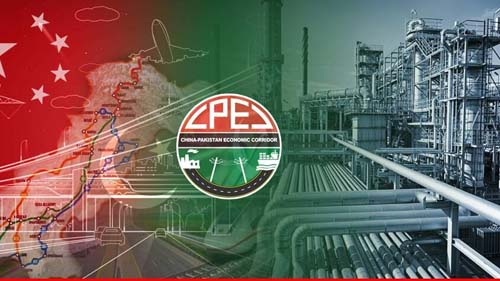Why is CPEC phase 2 crucial for Pakistan?

Dr Sadia Sulaiman
The CPEC project has entered its second phase. This phase is aimed at accelerating the socio-economic development all across Pakistan through engagement in various fields ranging from agricultural growth to expansion of tourism industry and enhancing technical educational and healthcare facilities, besides joint ventures between China and Pakistan to counter the climate change threat. This phase will also focus on poverty alleviation through agricultural and industrial cooperation.
In view of the prevailing economic crisis in the country where the debt burden and subsequent increasing inflation has taken a toll on the common man’s life, the CPEC phase 2 seems promising for ordinary citizens provided the government is able to devise a strategy to tap its potential focussing on public welfare.
CPEC has attracted attention owing to its potential to generate 700,000 jobs and multiple business opportunities. However, there has been little focus on socio-economic benefits of CPEC, especially its impacts on health and education sectors. During the first phase of CPEC, the Community Investment Plan (CIP) for socio-economic uplift of the communities living in the areas of the project has remained a key feature of various CPEC projects. But since those programmes were limited in focus and scope, they failed to produce a trickledown effect.
The tide can be changed in the ongoing second phase. The government needs to devise a strategy to associate the individual CPEC projects with community development and public good in order to uplift their socio-economic profiles in both rural and urban areas. In pursuit of this target, the government should take certain important steps, as follows:
First, there is need to prioritise the socio-economic development projects that have already been identified by the joint cooperation committee (JCC) of CPEC for its phase 2. They included 27 projects in six sectors including agriculture, health, education, drinking water supply, poverty alleviation, and vocational and technical education. Effective development communication and engagement with local communities is not only important for the cogency and long-term success of CPEC projects but also crucial for addressing the socio-economic needs of the common people.
There is a need to incorporate ‘community development’ especially in health and education sectors as core of all individual projects. As mentioned, the CIP has remained part of CPEC projects but not utilised to the maximum. For example, under the CIP, 11 projects, both in Punjab and AJK, have been carried out for the shared benefit of the local community around the Karot Hydropower Project in which a school and an emergency unit at a local hospital have been constructed. There is a need to adopt such a policy of constructing new schools and health units especially in SEZs and larger industrial units. The connection that such initiative will create between the locals and the project would make the gains of CPEC long-lasting.
Last but not least, a smart approach in this context can be to synchronise the CPEC projects with the UN SDGs. Pakistan was among the first few countries to adopt the SDGs for sustainable development and poverty reduction in 2016. However, Pakistan is facing challenges in achieving these goals due to a lack of resources, and its ranking has dropped on the global SDGs index from 115 in 2016 to 134 in 2020. Pakistan needs to focus more on the achievement of SDGs due to the abysmal state of its socio-economic development landscape. Pakistan’s performance on health and education sectors has remained miserable where its infant mortality rate hardly stands around 50% and literacy rate barely 30-40%.
Both CPEC and SDGs are two important components of Pakistan’s development policy. Hence their interplay in the urban and rural settings provided a unique and distinctive account of actual socio-economic situation in the project location of CPEC. This approach would save both energy and money invested separately in achievement of SDGs on the one hand and CPEC development goals on the other. Especially during this second phase of CPEC, investment policies and planning must be aligned towards clearly identified SDG targets especially in health and education sectors for the benefit of common people.





